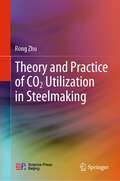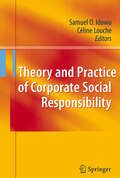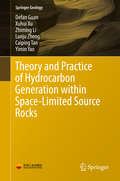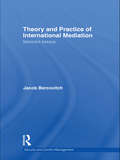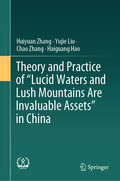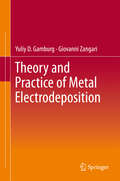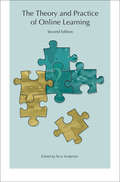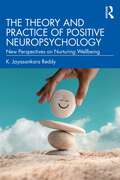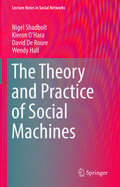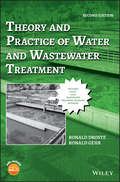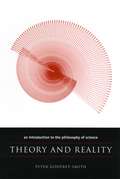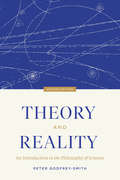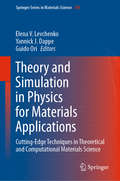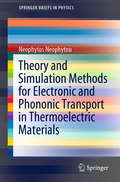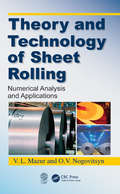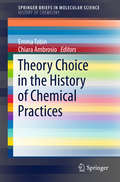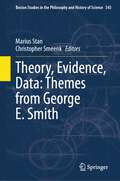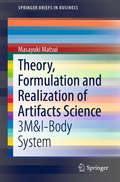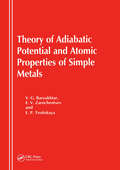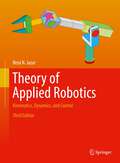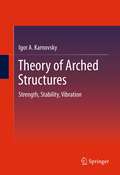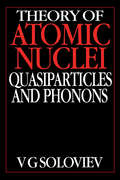- Table View
- List View
Theory and Practice of CO2 Utilization in Steelmaking
by Rong ZhuThis book analyzes the mechanism of the application of CO2 in steelmaking, by looking at the thermodynamics and kinetics of the reactions of CO2 with the elements present in molten steel. This book is the first academic monograph either at home or abroad on the application of CO2 in the steelmaking field. The thermodynamic conditions of the reactions of CO2 with silicon, manganese, phosphorus, chromium, nickel, vanadium, and other elements were calculated and analyzed using the FactSage thermodynamic software, and the selective oxidation law of the above multiple elements by CO2 was also analyzed. In terms of kinetics, the interfacial reaction mechanism of CO2 was analyzed via gas isotope exchange technology, and the O2 transfer process and transfer rate between the CO2, slag, and steel were studied. In terms of materials and energy balance, how to use the high-temperature characteristics of CO2 to control the temperature of the molten pool, improve the reaction conditions of molten iron, reduce the evaporation of molten iron, and reduce the amount of steelmaking dust were introduced. Based on the experimental data, theoretical models of unit operation for the application of CO2 in steelmaking were established, including decarburization, denitrification, dephosphorization, decarburization and chromium retention, vanadium extraction, and carbon preservation, and these theoretical models were applied to the steelmaking production process, which is an important step in going from theory to practice. The above research work has opened up a new solution for energy saving and liquid steel cleaning in the iron and steel production process and represents progress in steelmaking technology. This book is used as a reference book for managers, engineering and technical personnel, and related professional teachers and students of Iron & Steel enterprises, government departments, consulting services and evaluation agencies, colleges, and secondary professional schools.
Theory and Practice of Corporate Social Responsibility
by Celine Louche Samuel O IdowuModern businesses and organizations understand that corporate social responsibility (CSR) has become an important factor for sustainable success. At the same time CSR has established itself as a widely accepted element of courses in managerial training and education. This book, designed to support CSR teaching, collects 14 essays that clearly illustrate and explain the benefits and challenges of socially responsible corporate policies. Aligning theory and practice, the book focuses on four central themes: management, environment and sustainability, corporate social responsibility, and accounting and financial reporting. Business students and experienced managers alike will find this book a valuable resource that helps them to discover the strong forces that link successful management with corporate social responsibility.
Theory and Practice of Hydrocarbon Generation within Space-Limited Source Rocks
by Defan Guan Xuhui Xu Zhiming Li Lunju Zheng Caiping Tan Yimin YaoThis book analyzes hydrocarbon generation and accumulation within space-limited source rocks. The authors draw conclusions based on the principles of basin formation, hydrocarbon generation and accumulation, coupled with the practice of terrigenous basins in eastern China. Hydrocarbon generation and expulsion have been quantitatively assessed in space-limited source rock systems. This book explores new hydrocarbon generation and expulsion models to reflect real geological situations more accurately. The theory and practice proposed in this book challenge the traditional theory of kerogen thermal degradation and hydrocarbon generation.
Theory and Practice of International Mediation: Selected Essays (Routledge Studies in Security and Conflict Management)
by Jacob BercovitchThis volume brings together some of the most significant papers on international conflict mediation by Professor Jacob Bercovitch, one of the leading scholars in the field. It has become common practice to note that mediation has been, and remains, one of the most important structures of dealing with and resolving social conflicts. Irrespective of the level of political or social organization, of their location in time and space, and of the political sophistication of a society, mediation has always been there to help deal with conflicts. As a method of conflict management, the practice of settling disputes through intermediaries has had a rich history in all cultures, both Western and non-Western. In some non-Western countries (especially in the Middle East and China) mediation has been the most important and enduring structure of conflict resolution. Jacob Bercovitch has been at the forefront of developments in international conflict mediation for more than 25 years, and is generally recognized as one of the most important scholars in the field. His theoretical and empirical analyses have come to define the parameters in the study of mediation. This volume will help scholars and practitioners trace the history of the field, its position today and its future and will be of much interest to all students of mediation, negotiation, conflict management, international security and international relations in general.
Theory and Practice of "Lucid Waters and Lush Mountains Are Invaluable Assets" in China
by Huiyuan Zhang Yujie Liu Chao Zhang Haiguang HaoThis book mainly reviews the progress, effectiveness, and transformation mode of China's current practice of "Lucid Waters and Lush Mountains Are Invaluable Assets" Theory (abbreviated as the "Two Mountain Theory"). A total of 10 typical cases of ecological restoration, ecological industry, ecological market and green finance have been formed based on the theory. In the future, the Center for Ecological Civilization will continue to strengthen the practical exploration and theoretical innovation of the "Two Mountains Theory" to provide support for achieving new progress in ecological civilization construction and building a beautiful China.
Theory and Practice of Metal Electrodeposition
by Giovanni Zangari Yuliy D. GamburgThe authors provide new insights into the theoretical and applied aspects of metal electrodeposition. The theory largely focuses on the electrochemistry of metals. Details on the practice discuss the selection and use of metal coatings, the technology of deposition of metals and alloys, including individual peculiarities, properties and structure of coatings, control and investigations. This book aims to acquaint advanced students and researchers with recent advances in electrodeposition while also being an excellent reference for the practical electrodeposition of metals and alloys.
Theory and Practice of Natural Computing
by Carlos Martín-Vide Takaaki Mizuki Miguel A. Vega-RodríguezThis book constitutes the refereed proceedings of the 5th International Conference on Theory and Practice of Natural Computing, TPNC 2016, held in Sendai, Japan, in December 2016. The 16 revised full papers presented together with one invited talk in this book were carefully reviewed and selected from 33 submissions. The papers are grouped in topical sections on applications of natural computing, evolutionary computation, formal models, and machine learning.
The Theory and Practice of Online Learning
by Terry AndersonIn this important collection of essays by practitioners and scholars that has been downloaded nearly half a million times is an overview of some of the most pressing issues in online education. By addressing transformations arising from educational technology advances and the new business conditions and modes of delivery of education, the contributors to The Theory and Practice of Online Learning provide insights into this complex, diverse, and rapidly evolving field.
The Theory and Practice of Positive Neuropsychology: New Perspectives on Nurturing Wellbeing
by K. Jayasankara ReddyThis pioneering work focuses on positive psychology and wellbeing from a neuropsychological perspective. It bridges social, emotional, and psychological principles to explore the burgeoning field of positive neuropsychology.Combining academic theory and clinical practice, it delves into foundational principles, assessments of neuro-cognitive health, evidence-based interventions, practical applications and real-life case studies, and the profound implications of positive neuropsychology in educational contexts. At the intersection between neuropsychology and positive psychology, this book advocates the recent shift toward recognizing the paramount importance of exploring the positive facets of neuropsychological functioning, rather than the historical focus of neuropsychology on ameliorating cognitive deficits and addressing neurological disorders.A must-read for academics, clinicians, and students in neuropsychology, clinical psychology, and positive psychology, this book is also invaluable for anyone interested in enhancing cognitive wellbeing and resilience.
The Theory and Practice of Social Machines (Lecture Notes in Social Networks)
by Nigel Shadbolt Kieron O’Hara David De Roure Wendy HallSocial machines are a type of network connected by interactive digital devices made possible by the ubiquitous adoption of technologies such as the Internet, the smartphone, social media and the read/write World Wide Web, connecting people at scale to document situations, cooperate on tasks, exchange information, or even simply to play. Existing social processes may be scaled up, and new social processes enabled, to solve problems, augment reality, create new sources of value, and disrupt existing practice.This book considers what talents one would need to understand or build a social machine, describes the state of the art, and speculates on the future, from the perspective of the EPSRC project SOCIAM – The Theory and Practice of Social Machines. The aim is to develop a set of tools and techniques for investigating, constructing and facilitating social machines, to enable us to narrow down pragmatically what is becoming a wide space, by asking ‘when will it be valuable to use these methods on a sociotechnical system?’ The systems for which the use of these methods adds value are social machines in which there is rich person-to-person communication, and where a large proportion of the machine’s behaviour is constituted by human interaction.
Theory and Practice of STEAM Education in Japan (Routledge Research in Education)
by Tetsuo IsozakiWith unique insights into the potential power of Japan’s STEM education, Isozaki and his team of contributors share multiple perspectives on STEM education theory and practices in Japan.Examining how Japan has become an economic superpower based on scientific and technological innovations, this book provides a particular focus on the theoretical and practical analysis of STEM education from historical and comparative perspectives. Additionally, it links the theory and practice of STEM education from primary education to teacher education at universities across Japan and considers both societal and individual needs in advancing STEM literacy. Chapters are written by researchers from a diverse range of fields in education, including science, mathematics, technology, and pedagogy. The book also offers practical teaching tools and materials for teacher education and assessment to promote STEM literacy in students so that they are able to address local and global socio-scientific issues in a real-world context.Covering a wide spectrum of STEM education, this book provides valuable insights and practical suggestions, from a Japanese perspective, for academic researchers, policymakers, and educators who are interested in STEM education.
Theory and Practice of Water and Wastewater Treatment
by Ronald L. Droste Ronald L. GehrProvides an excellent balance between theory and applications in the ever-evolving field of water and wastewater treatment Completely updated and expanded, this is the most current and comprehensive textbook available for the areas of water and wastewater treatment, covering the broad spectrum of technologies used in practice today—ranging from commonly used standards to the latest state of the art innovations. The book begins with the fundamentals—applied water chemistry and applied microbiology—and then goes on to cover physical, chemical, and biological unit processes. Both theory and design concepts are developed systematically, combined in a unified way, and are fully supported by comprehensive, illustrative examples. Theory and Practice of Water and Wastewater Treatment, 2nd Edition: Addresses physical/chemical treatment, as well as biological treatment, of water and wastewater Includes a discussion of new technologies, such as membrane processes for water and wastewater treatment, fixed-film biotreatment, and advanced oxidation Provides detailed coverage of the fundamentals: basic applied water chemistry and applied microbiology Fully updates chapters on analysis and constituents in water; microbiology; and disinfection Develops theory and design concepts methodically and combines them in a cohesive manner Includes a new chapter on life cycle analysis (LCA) Theory and Practice of Water and Wastewater Treatment, 2nd Edition is an important text for undergraduate and graduate level courses in water and/or wastewater treatment in Civil, Environmental, and Chemical Engineering.
Theory and Reality: An Introduction to the Philosophy of Science
by Peter Godfrey-SmithHow does science work? Does it tell us what the world is "really" like? What makes it different from other ways of understanding the universe? In Theory and Reality, Peter Godfrey-Smith addresses these questions by taking the reader on a grand tour of one hundred years of debate about science. The result is a completely accessible introduction to the main themes of the philosophy of science. Intended for undergraduates and general readers with no prior background in philosophy, Theory and Reality covers logical positivism; the problems of induction and confirmation; Karl Popper's theory of science; Thomas Kuhn and "scientific revolutions"; the views of Imre Lakatos, Larry Laudan, and Paul Feyerabend; and challenges to the field from sociology of science, feminism, and science studies. The book then looks in more detail at some specific problems and theories, including scientific realism, the theory-ladeness of observation, scientific explanation, and Bayesianism. Finally, Godfrey-Smith defends a form of philosophical naturalism as the best way to solve the main problems in the field. Throughout the text he points out connections between philosophical debates and wider discussions about science in recent decades, such as the infamous "science wars." Examples and asides engage the beginning student; a glossary of terms explains key concepts; and suggestions for further reading are included at the end of each chapter. However, this is a textbook that doesn't feel like a textbook because it captures the historical drama of changes in how science has been conceived over the last one hundred years. Like no other text in this field, Theory and Reality combines a survey of recent history of the philosophy of science with current key debates in language that any beginning scholar or critical reader can follow.
Theory and Reality: An Introduction to the Philosophy of Science, Second Edition
by Peter Godfrey-SmithHow does science work? Does it tell us what the world is “really” like? What makes it different from other ways of understanding the universe? In Theory and Reality, Peter Godfrey-Smith addresses these questions by taking the reader on a grand tour of more than a hundred years of debate about science. The result is a completely accessible introduction to the main themes of the philosophy of science. Examples and asides engage the beginning student, a glossary of terms explains key concepts, and suggestions for further reading are included at the end of each chapter. Like no other text in this field, Theory and Reality combines a survey of recent history of the philosophy of science with current key debates that any beginning scholar or critical reader can follow. The second edition is thoroughly updated and expanded by the author with a new chapter on truth, simplicity, and models in science.
Theory and Simulation in Physics for Materials Applications: Cutting-Edge Techniques in Theoretical and Computational Materials Science (Springer Series in Materials Science #296)
by Elena V. Levchenko Yannick J. Dappe Guido OriThis book provides a unique and comprehensive overview of the latest advances, challenges and accomplishments in the rapidly growing field of theoretical and computational materials science. Today, an increasing number of industrial communities rely more and more on advanced atomic-scale methods to obtain reliable predictions of materials properties, complement qualitative experimental analyses and circumvent experimental difficulties. The book examines some of the latest and most advanced simulation techniques currently available, as well as up-to-date theoretical approaches adopted by a selected panel of twelve international research teams. It covers a wide range of novel and advanced materials, exploring their structural, elastic, optical, mass and electronic transport properties. The cutting-edge techniques presented appeal to physicists, applied mathematicians and engineers interested in advanced simulation methods in materials science. The book can also be used as additional literature for undergraduate and postgraduate students with majors in physics, chemistry, applied mathematics and engineering.
Theory and Simulation Methods for Electronic and Phononic Transport in Thermoelectric Materials (SpringerBriefs in Physics)
by Neophytos NeophytouThis book introduces readers to state-of-the-art theoretical and simulation techniques for determining transport in complex band structure materials and nanostructured-geometry materials, linking the techniques developed by the electronic transport community to the materials science community. Starting from the semi-classical Boltzmann Transport Equation method for complex band structure materials, then moving on to Monte Carlo and fully quantum mechanical models for nanostructured materials, the book addresses the theory and computational complexities of each method, as well as their advantages and capabilities. Presented in language that is accessible to junior computational scientists, while including enough detail and depth with regards to numerical implementation to tackle modern research problems, it offers a valuable resource for computational scientists and postgraduate researchers whose work involves the theory and simulation of electro-thermal transport in advanced materials.
Theory and Technology of Sheet Rolling: Numerical Analysis and Applications
by V.L. Mazur O. V. NogovitsynDespite significant advances in technology and equipment for rolled steel, the computerization of production processes and the steady increase in production of sheet steel, recent scientific and technological achievements have not been compiled in the special literature and revealed to a wide range of specialists. This book details new approaches, computational techniques, and reliable calculation methods of leaf-rolling modes, forecasting and optimization of the technologies, increasing productivity of the mill and a radical improvement in the quality of steel products.
Theory Choice in the History of Chemical Practices
by Emma Tobin Chiara AmbrosioThis collection of essays examines the question of theory from the perspective of the history of chemistry. Through the lens of a number of different periods, the authors provide a historical analysis of the question of theory in the history of chemical practice. The consensus picture that emerges is that the history of science tells us a much more complex story about theory choice. A glimpse at scientific practice at the time shows that different, competing as well as non-competing, theories were used in the context of the scientific practice at the various times and sometimes played a pivotal pedagogical role in training the next generation of chemists. This brief brings together a history of chemical practice, and in so doing reveals that theory choice is conceptually more problematic than was originally conceived. This volume was produced as part of the Ad HOC chemistry research group hosted by University College London and University of Cambridge.
Theory, Evidence, Data: Themes from George E. Smith (Boston Studies in the Philosophy and History of Science #343)
by Marius Stan Christopher SmeenkThis book builds on the path-breaking work of George E. Smith and further explores the notions of evidence and confirmation in the exact sciences from two perspectives: conceptual and historical. Contributions in this volume investigate the philosophical presuppositions, explanatory scope, and historical precursors of evidence in mathematical physics and related disciplines. The papers are written by and of interest to philosophers and historians of science.
Theory, Formulation and Realization of Artifacts Science: 3M&I-Body System (SpringerBriefs in Business)
by Masayuki MatsuiThis book considers and builds on the main propositions regarding body similarity and the principles of nature versus artifacts in science. It also explores the design (matrix) power of the human, Material/Machine, Money & Information (3M&I) body with respect to productivity/gross domestic product (GDP). The book begins in 2009 with Weiner’s cybernetics and describes Matsui’s theory and dynamism concerning the basic equation of W = ZL and artifact formulation using matrix methods, such as Matsui’s matrix equation (Matsui’s ME). In his book Fundamentals and Principles of Artifacts Science: 3M&I-Body System, published by Springer in 2016, the author championed the white-box approach for 3M&I artifacts in contrast to Simon’s artificial approach from 1969. Two principles, the Sandwich (waist) and Balancing theories, and their fundamental problems, were identified. This book now proposes a third principle: the fractal/harmonic-like structure of the cosmos and life types in space and time. The book further elaborates on the complexity of the 3M&I system and management in terms of enterprises, economics, nature, and other applications. Also, the domain of nature versus artifacts is highlighted, demonstrating the possibility of a white-box cybernetics-type robot. This fosters the realization of humanized and harmonic worlds that combine increased happiness and social productivity in an age increasingly dominated by technology.
Theory of Adiabatic Potential and Atomic Properties of Simple Metals
by V G Baryakhtar E V Zarotchentsev E P TroitskayaThe contemporary ideas about the theory of atomic properties of metals are reviewed in this book. This theory is based upon concepts of pseudopotential and interacting electrons and is used for quantitative description of the whole complex of atomic properties of perfect simple metals. The authors have tried to maintain the consonance of the theoretical description of metal properties with computer experiment. A well-advanced theory with many new developments is presented, as well as simple and well-known theoretical approaches necessary for computer calculation. The background of the theory of atomic properties of crystals is addressed alongside the theory of pseudopotential form-factor in metals and the linear screening theory. This book will be useful for specialists in the theory and computer simulation of properties of solids.
The Theory of Almost Everything
by Robert OerterThere are two scientific theories which, taken together, explain the entire universe. The first, which describes the force of gravity, is widely known: Einstein's Theory of Relativity. But the theory that explains everything else - the Standard Model of Elementary Particles - is virtually unknown among the general public. Here, Oerter shows how what were once thought to be separate forces of nature were combined into a single theory by some of the most brilliant minds of the 20th century. Rich and accessible prose makes this a truly readable book.
Theory of Applied Robotics: Kinematics, Dynamics, and Control
by Reza N. JazarTheory of Applied Robotics: Kinematics, Dynamics, and Control presents detailed robotics concepts at a theoretical-practical level, concentrating on their practical use. Related theorems and formal proofs are provided, as are real-life applications. This new edition is completely revised, and includes updated and expanded example sets and problems and new materials. This textbook is designed for undergraduate or first-year graduate programs in mechanical, systems, and industrial engineering. Practicing engineers, researchers, and related professionals will appreciate the book’s user-friendly presentation of a wealth of robotics topics, most notably in 3D kinematics and dynamics of manipulator robots.
Theory of Arched Structures
by Igor A KarnovskyTheory of Arched Structures: Strength, Stability, Vibration presents detailed procedures for analytical analysis of the strength, stability, and vibration of arched structures of different types, using exact analytical methods of classical structural analysis. The material discussed is divided into four parts. Part I covers stress and strain with a particular emphasis on analysis; Part II discusses stability and gives an in-depth analysis of elastic stability of arches and the role that matrix methods play in the stability of the arches; Part III presents a comprehensive tutorial on dynamics and free vibration of arches, and forced vibration of arches; and Part IV offers a section on special topics which contains a unique discussion of plastic analysis of arches and the optimal design of arches..
Theory of Atomic Nuclei, Quasi-particle and Phonons
by V.G. SolovievUnique in scope and treatment, Theory of Atomic Nuclei, Quasi-particle and Phonons gives a microscopic description of the structure of complex nuclei at low and intermediate excitation energies in terms of quasi-particle and phonon operators. A substantial quantity of modern experimental data is collected together and incorporated into the book to complement the theoretical treatment. This source book is an extremely useful research reference of the results of experimental work in the area.
